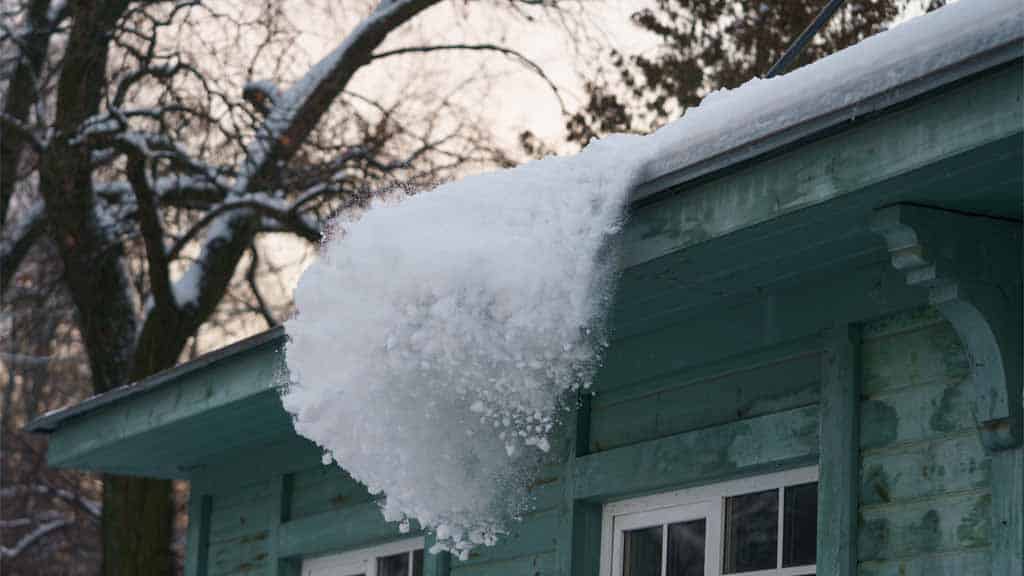
Most houses, especially those built, are made with asphalt shingles, and some are built with metal shingles.
Ice dams on the roof are frequently shown during the snowy wintertime, and if it gets too big, it is better to remove them carefully before it damages your roof. You’ve probably seen in many winters where you find transparent ice sticks hanging on the house’s edges.
Those are called ice dams, created when the snow freezes overnight on the roof.
- Due to the cold weather, a good amount of snow accumulates on the roof, melts, and freezes overnight.
- The melting water freezes as they slide down the roof’s edge, creating a sharp-shaped ice stick. If you have an ice dam on your roof, don’t panic.
- Ice dams are common in cold climates and can be removed relatively easily. Here’s what you need to know about ice dams and how to deal with them.
- An ice dam is a ridge of ice that forms at the edge of a roof during cold weather. Ice dams can cause severe damage to roofs, so it’s essential to remove them as soon as possible.
There are a few different ways to remove an ice dam on the roof, but a specially designed-ice dam removal tool is the most effective method. Hardware stores usually carry these tools.
Is Your Roof Leaking?
What Are Ice Dams, And Why Do They Form?
During the winter, ice dams are a common problem. Water from melting snow freezes on the edge of your roof, causing them to form. You may experience leaks when you have ice dams on your roof. A safety hazard can also arise from them.
You can do a few things to prevent ice dams from forming on your roof. Debris should not be allowed to accumulate in your gutters. Keep them clear of leaves and other materials that can block water flow.
You should also make sure that your attic is well-ventilated. This will help keep the temperature in your attic consistent and prevent heat from rising into the upper levels of your home and melting snow on your roof. If you do have an ice dam, there are a few things you can do to remove it safely.
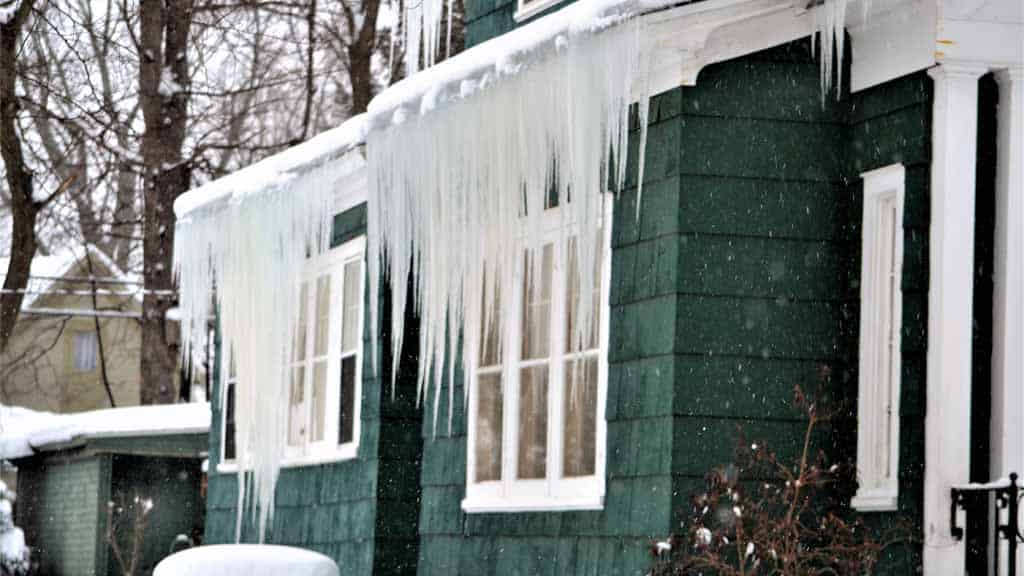
The Best Way To Prevent Ice Dams
One of the best ways to prevent ice dams from forming on your roof is to ensure that your attic and roof are properly insulated and ventilated. Ice dams can form when heat from your home escapes into the attic and melts the snow on your roof. The melted snow then refreezes, creating a barrier preventing water from draining off your roof. Leaks can damage your home.
To prevent this, you should ensure that your attic is properly insulated so that heat does not escape into it. You should also ensure adequate ventilation in your attic to allow any moisture that does escape to dissipate quickly.
During cold weather, ice dams on the roof form at the edge of roofs. Shingles can back up and leak when water from melting snow freezes, causing ceiling damage and leaks.
If you want to prevent ice dams from forming, you can do several things:
- Keep your gutters clean. Leaves and other debris can clog gutters and downspouts, causing water to back up and freeze.
- Make sure your attic is well-ventilated. Warm air from the house rises into the attic and can melt snow on the roof. Ventilation helps keep the attic cooler, which prevents snow from melting.
- Install insulation in your attic. This will help keep heat from rising into the attic and melting snow on the roof.
- If your roof has been snowed following a storm, use a roof rake to remove the snow.
Ice dams can wreak havoc on your home and wallet if you’re not careful. The good news is that you can do a few things to prevent them. One of the best ways to prevent ice dams is to ensure your roof and attic are properly insulated and ventilated.
This will help keep the heat in your home from escaping and melting the snow on your top. Maintaining clean gutters is another way to prevent ice dams. Clogged drains can cause water to back up and freeze, leading to an ice dam. If you live in an area prone to ice dams, taking these precautions can help save you a lot of time, money, and headache in the long run.
Is Your Roof Leaking?
How Does It Damage The Roof?
If the ice dam on the roof gets too large, it gets heavier and blocks the snow from draining off the roof. Further on, this could damage your roof system and the gutters. Small ice dams that look like icicles won’t be a big problem.
However, if the dams are too big and you can see the water creating a pond on the roof’s edge, that could soon damage the roof. If too many or too large ice dams form on your roof, that could quickly create a roof leak.
- Once the water is hidden behind the ice dams, it goes underneath the shingles and freezes overnight. When water freezes, the mass gets more extensive because of the density.
- It creates and expands gaps between the shingles, underlayment, and waterproof barrier. This enables more water to get inside the shingles and results in leakage inside your house.
- During cold weather, an ice dam forms at the roof’s edge. When snow and ice melt on the warm top, the water runs down to the colder eave and freezes again.
- This process repeats itself, creating a dam of ice that prevents further melting water from draining off the roof. The trapped moisture then backs up under shingles, seeps into the house, and can cause extensive damage to ceilings, walls, and insulation.
- Ice dams are most likely to form when there is significant snow on the roof and when there are large temperature swings between day and night.
It is essential to keep the entire roof cold so snow and ice will not melt. This can be done by installing proper attic ventilation and insulation.
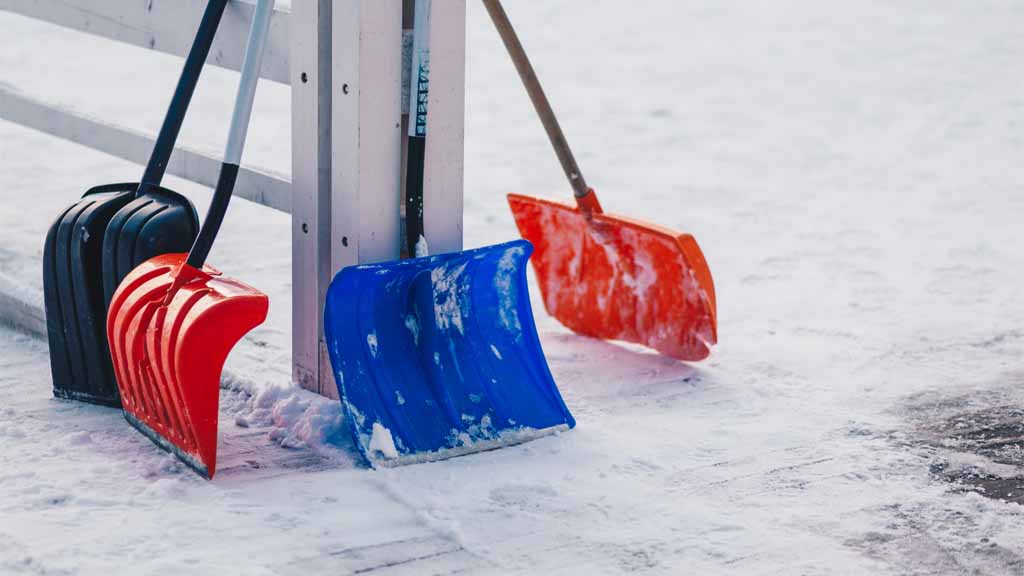
How To Remove An Ice Dam On The Roof.
The sooner you find out, the less damage to your roof. Before starting the removal process, ensure there are no people around you. Big sharp ice dams are heavy and robust enough to hurt people.
Once no one is around you, ensure you have all the safety gear, like safety goggles, a safety hard hat, work gloves, and heavy-duty non-slip shoes.
The first step toward removing an ice dam is to knock it down carefully. You will prevent yourself from injuring yourself and the roof and gutters from being damaged. Climb up on the roof by carefully placing your ladder. Once you are up there, start by chipping off the ice and clearing the roof.
It is important to clean the gutters and the surroundings to prevent them from detaching. If you know there is no roof leak, pouring hot water is another option.
Calcium chloride ice-melting products can speed up the process if you want to use chemical products. When sprinkled on the roof, ice dams and ice will melt much faster.
Do not use rock salt or sodium chloride because it could damage your roof.
You’re not alone if you have an ice dam on your roof. Ice dams can form when snow or ice melts and then refreezes at the edge of your roof. When this happens, the melted water can back up under shingles and cause leaks in your roof and ceilings.
Fortunately, you can do a few things to remove an ice dam. First, use heat tape or heated cables to melt the ice dam. You can also use a hairdryer or heat gun on low heat to melt the ice dam on the roof. Just be careful not to overheat the shingles on your roof.
If those methods don’t work, you may need to call a professional to remove the ice dam. They will likely use a steam machine to melt the ice dam without damaging your roof.
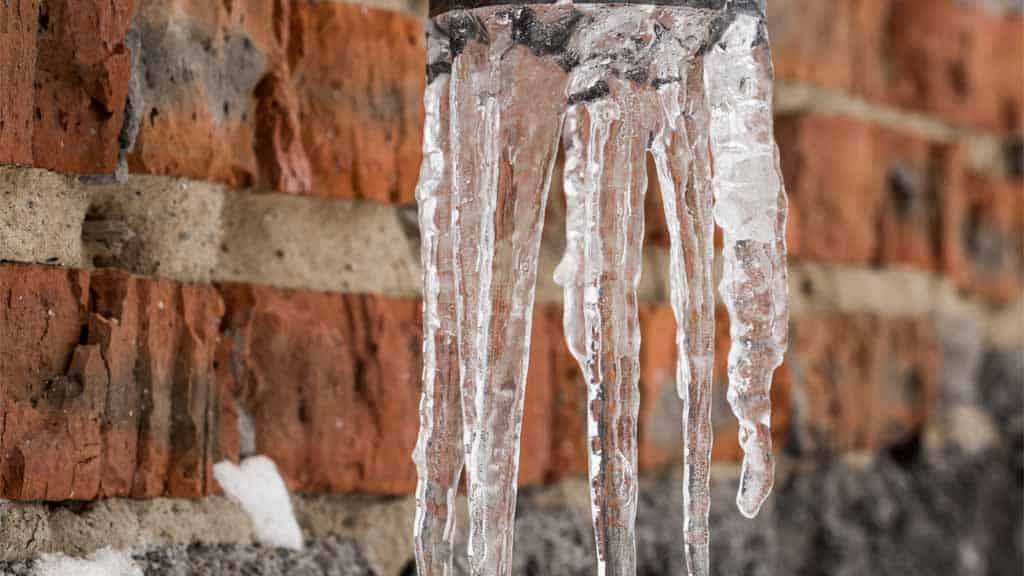
How To Prevent Ice Dams Before Winter Arrives
One of the most common and effective ways to prevent an ice dam on the roof is to have a sound ventilation system on the roof. The reason for the melting snow is the heat coming from the inside of the house.
Heat moves upwards, and heat inside the house moves up to the ceiling. So, the snow on the ridge of the roof will start melting and flowing to the cooler section of the roof, which is an edge, and freeze again.
As a result of not being completely attached to the wall, the edges remain cool. You can add additional ventilation holes to your existing shingles. If you have a proper ventilation system, the heat will not concentrate on the attire but will be evenly spread out.
People often forget that cleaning the gutters can prevent many kinds of damage to your roof. Start by carefully knocking down the ice dams. This needs to be done to avoid hurting yourself and structural damage to the top and gutters.
Carefully find a spot to place your ladder and climb up on the roof. Once you are up there, start by chipping off the ice and clearing the roof. Keeping the gutters clean will prevent them from detaching. Pouring hot water is another option if you know there is no leak on the roof.
An ice-melting product that looks like a small grain of calcium chloride could help speed up the process. To melt the ice and ice dams quickly, sprinkle the effect on the roof. It is not recommended to use rock salt or sodium chloride on your roof due to the risk of damage.
Is Your Roof Leaking?
A Professional’s Help
If the roof is highly damaged or has too many giant ice dams, it’s better to hire an expert. If your roof is too high to reach with a standard ladder, have expert care for it. When removing and fixing ice dams and damaged roofs, there are many things to consider. Many different reasons could cause a roof leak. An expert could provide the best solution and preventive measures.
If you have an ice dam on the roof, don’t try to remove it yourself. You could end up damaging your roof or hurting yourself. Instead, call a professional with the training and equipment to safely remove the ice dam.
A professional will use a heated hose to melt and break the ice into small pieces. They will also use special tools to scrape any remaining ice without damaging your roof.
Once the ice dam is removed, your professional will likely recommend that you take steps to prevent future ice dams from forming. This may involve adding insulation to your attic or installing gutter guards.
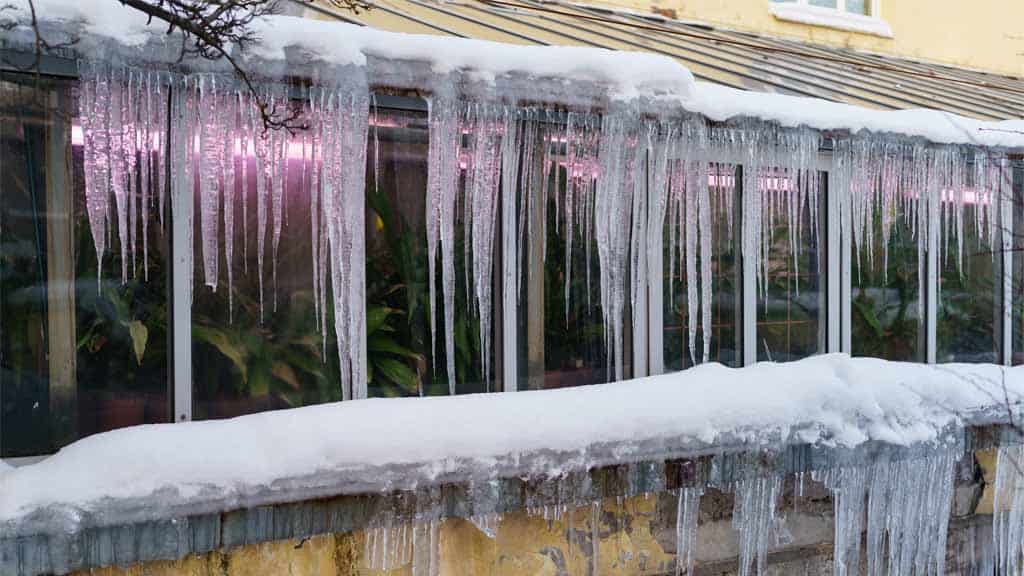
Does Home Insurance Cover Ice Dams?
It may vary by insurance company, but most homeowner insurance covers home damages due to extreme weather. Damage to a home is covered by “dwelling coverage.”
In some cases, the insurance company will provide additional living expense coverage to provide the family with a hotel to stay in while waiting for their house to be repaired.
Insurance provides additional structure coverage for any other damages not directed to the home. It partially covers the damages to other components like the garden and the garage.
However, insurance does not cover damages to personal belongings caused by ice dams. Make sure to read your company’s insurance policy because some may not cover the removal service of the ice dam on the roof.
Terms and limits apply to every case of property damage, so talk to an agent for better help. Cold winter tends to feel longer than other weather. Before the winter arrives, double-check if your roof has enough ventilation system, if your walls are well insulated, and if there are any damages on the top.
Solving a problem after it occurs is much more complicated than preventing it in the first place. The icicles that form on your roof might look pretty, but did you know that those ice dam on the roof can cause serious problems? And your home insurance might not cover the repairs.
Ice dams form when the heat from your house melts the snow on your roof. The water runs down to the hard edge of the roof and freezes. This can cause damage to your shingles, gutters, and even the structure of your house.
You should check your home insurance policy if you have damage from an ice dam. Most policies have an exclusion for “ice, snow, or sleet,” so you might not be covered. If you have a comprehensive approach, you might be substituted for other damages, like if the ice dam caused water to leak into your house.
Conclusion
If you have an ice dam on the roof the best way to deal with it is to remove the snow and ice from your roof. You can do this by using a shovel or a roof rake. You should also ensure that your gutters are clear of debris to catch the melting snow and water. Finally, you should insulate your attic to prevent heat from escaping and causing the ice dam on the roof to form.

